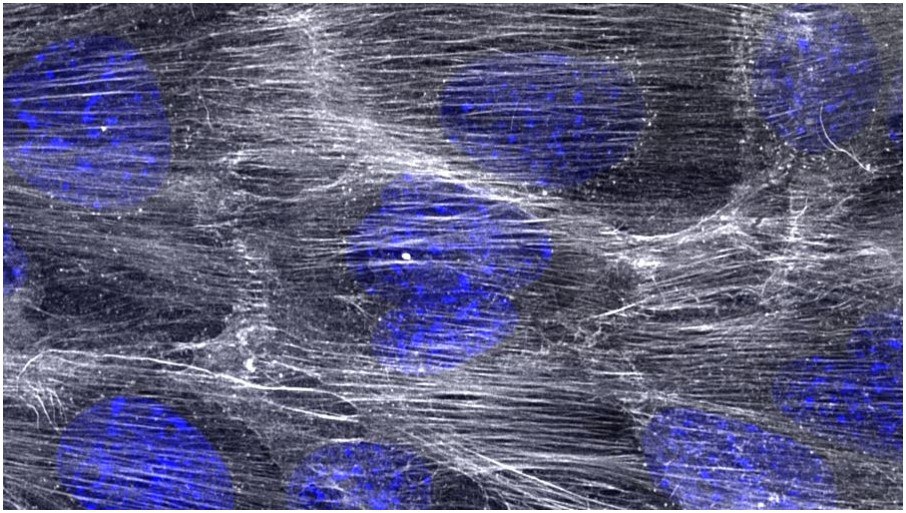Information processing of mechanically stressed epithelia

The skin defines the largest organ in mammals and is the first line protection against chemical, biological and mechanical stresses. This ability is based in particular on the multilayer structure of the epidermis as the outer layer of the skin. Each layer of this epithelium performs specific functions, with only the basal epidermal layer establishing cell-matrix contacts to the basement membrane and being responsible to generate new epithelial cells. Suprabasal layers are characterized by the exclusive establishment of various cell-cell contacts, which ensure increasing cell contact from layer to layer in a well-orchestrated fashion. This ultimately goes along with distinct mechanical properties and mechanoresponses to mechanical stresses for each layer of the epidermis. We develop two- and three-dimensional epidermal artificial tissues to mimic natural conditions. These tissues are used for detailed analyses of intracellular and intercellular communication in response to strain. We focus on cytoskeletal and adhesive adaptations and underlying signal cascade characterization. State of the art techniques from various scientific fields are combined with in-house developed stretching devices to ultimately help understanding tissue homeostasis and to tune epidermal tissue development for medical applications.
contact:
Dr. Bernd Hoffmann
Senior Scientist and Group Leader
- Institute of Biological Information Processing (IBI)
- Mechanobiology (IBI-2)
Room 2009

